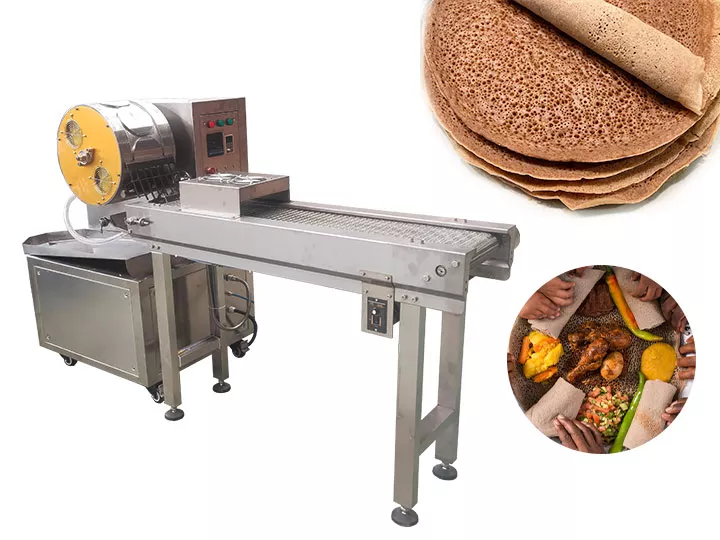Ethiopian Injera Making Machine could produce injera, spring rolls, lumpia wrappers, crepe cakes, and other pastry food. At the same time, it is also the main machine in the commercial spring roll production line. The pastry food processed by this machine is edible and tasty. This machine has multiple heating methods and a large capacity, while the size and production speed of the injera can be adjusted through a control panel. This machine could also match with other machines to be a large injera processing plant, and customers could also customize a lumpia wrapper machine or production line.
The structure of the Ethiopian injera making machine
This injera making machine includes a mixing system, paste feeding system, mainframe, heating, conveying belt, and cooling system. In addition, this machine can also increase the folding counting function. It consists of a rack, pneumatic components, electrical components, heating elements, and forming parts. The Ethiopian injera machine can produce lumpia wrappers with a thickness of 0.3-1.2mm. The heating method includes electromagnetic heating, electric heating, and gas heating. The shape, and size of the spring roll wrapper could be customized.
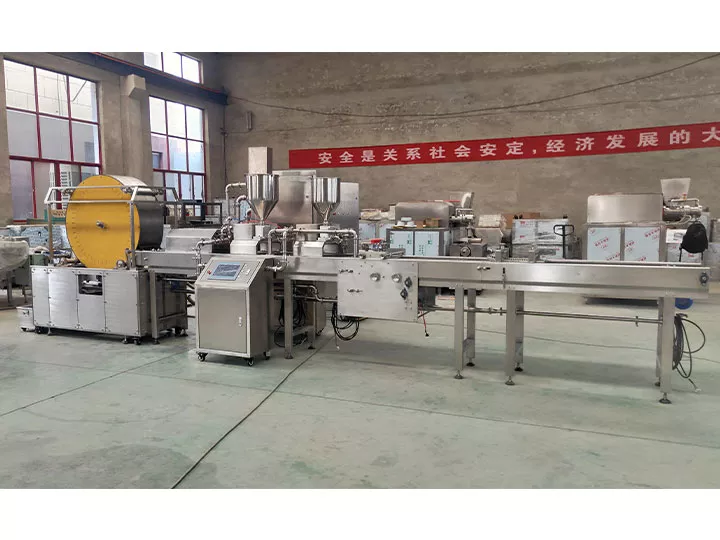
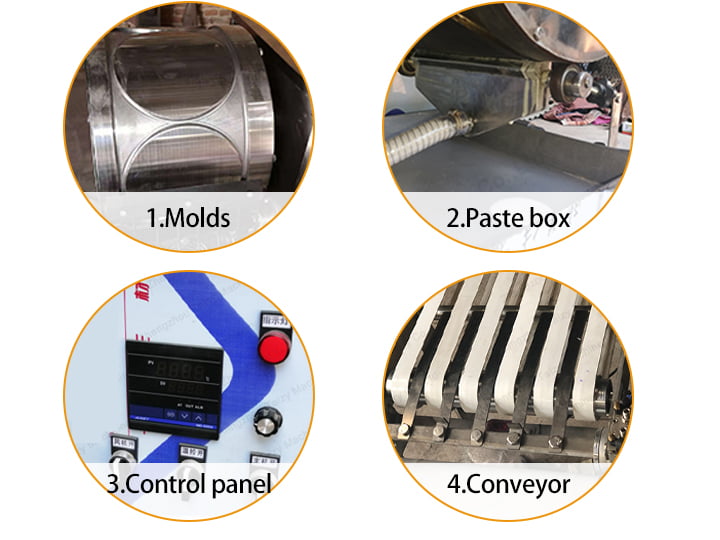
- Put the prepared flour paste into the equipment material box.
- When the oven mold is heated to 90 degrees, start the slurry pump to send the slurry to the nozzle.
- Operate the clutch lever to make the slurry adhere to the arc surface of the baking wheel.
- Rotating along with the roasting wheel, the raw material slurry is matured and automatically separated from the roasting wheel to form a skin-like food with a fixed thickness.
Finished Products
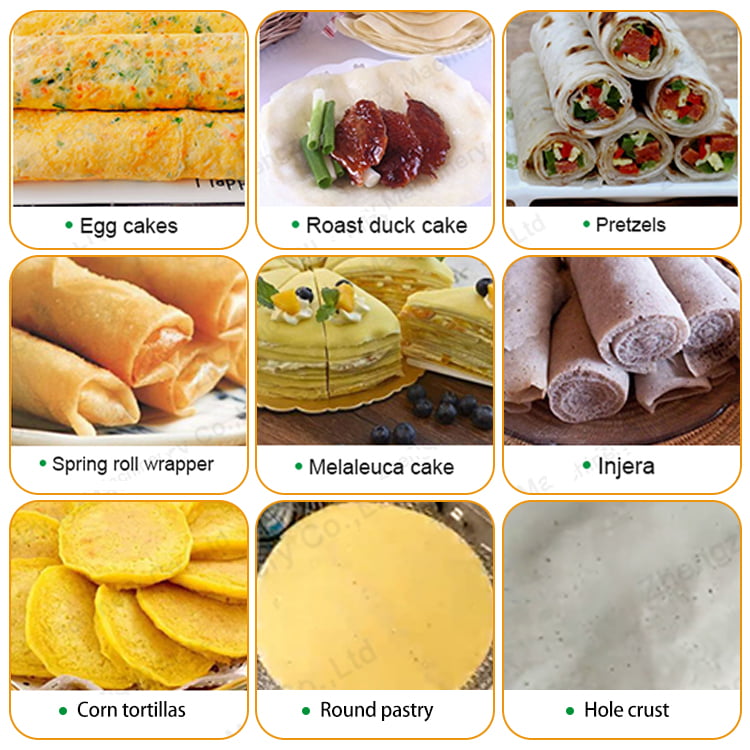
This lumpia wrapper machine could make injera, pancake, egg cakes, Pecking Duck pancake, corn tortilla, melaleuca cake, spring roll wrapper, and other food.
Technical Parameter of Ethiopian injera maker
| Model | TZ-3620 | TZ-5029 | TZ-8045 | TZ-12060 |
| Shape | Only round | Square, Round | Square, Round | Square, Round |
| Size(mm) | 1800*660*890 | 2400*800*1350 | 2800*1100*1600 | 3100*1300*1800 |
| weight | 260kg | 520kg | 750kg | 850kg |
| Diameter of a heat roller | 400*280mm | 500*330mm | 800*600mm | 1200*600mm |
| Diameter of injera | 10-25cm | Max 35cm | Max 45cm | Max 60cm |
| Electric Power | 6kw | 13kw | 32kw | 48kw |
| Cutting power | 1kw | 1kw | 1kw | 1kw |
| Capacity | 800-1000pcs/h | 1500-2000pcs/h | 3000-4000pcs/h | 5000-6000pcs/h |
| Sheet max size(mm) | Only roll:250 | Roll:350 square:300 | Roll:430 square:450 | 600 |
| Sheet thickness | 0.3-1.2mm | 0.3-1.2mm | 0.3-1.2mm | 0.3-1.2mm |
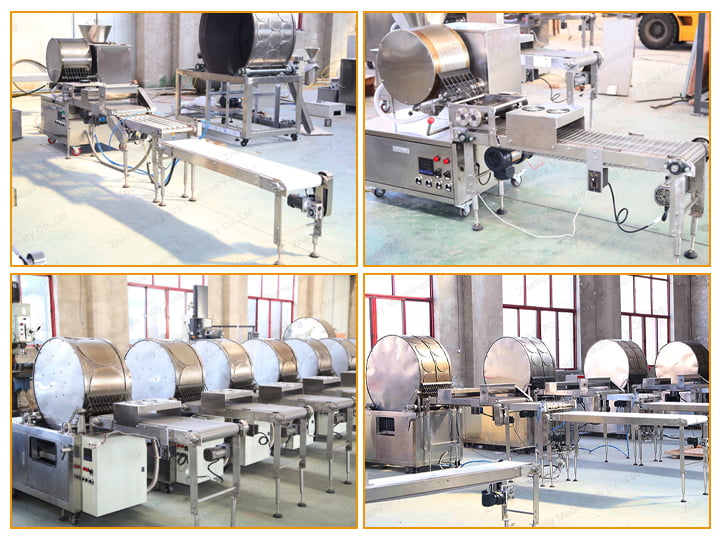
Advantages of injera making machine
- Stainless steel material
Most parts of this machine are made of 304 stainless steel. The heat roller is alloy.
- Highly automation
This machine can work automatically and it is easy to operate.
- Various heating methods
This Ethiopian injera making machine could heat through gas, electricity, and electromagnetic.
- Multiple shapes
This injera making machine could make square, rectangular, and round shape lumpia roll wrappers.
- Tailor-made service
The round spring roll wrapper machine and square lumpia wrapper machine both need to be customized.
- Wide applications
This injera making machine could produce many types of pastry food, like spring roll wrappers, egg pancakes, tortillas, and others.
- Large capacity
The Ethiopian injera making machine could process 800-6000 pieces of rolls per hour.
- Less noise and no need to maintain
The equipment only needs to fill the lubricating grease once a year.
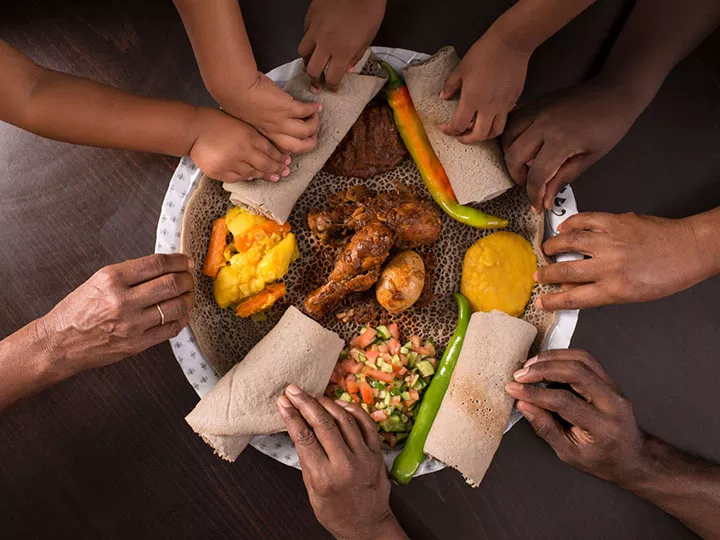
What is the process of making injera?
Raw materials: teff flour, general flour, salt, warm water, frying pan
- Pour teff flour, general flour, and salt together and add water to mix evenly.
- Cover with a paper towel or kitchen paper and keep still for 8 hours.
- Stir the mixture with a spoon. Then cover it here and stand still for 8 hours. This process needs to be repeated twice.
- The mixture will have a sour taste and bubbles after 3-5 days.
- Finally, you can pour some batter into the frying pan to make the injera.
How to make a crust and cake with an Ethiopian injera making machine?
- Electric heating type of crust and cake making machine. Firstly, preheat the heating cylinder to about 70-80 ℃, and apply a small amount of edible oil on the surface of the heating cylinder.
- And then add the filtered slurry into the slurry hopper or slurry cylinder to prepare for production, while adjusting the eccentric regulator with knobs on both sides of the nozzle, the device is adjusted so that the noodles are parallel to the heater, then you can start the production.
- During the initial production, reduce the machine speed and temperature, then gradually increase the Ethiopian injera making machine speed and temperature when the production is running normally.
- The produced spring rolls or cakes are stacked in a thickness of 10 cm, with a wet towel covered, and are placed on a table or flat board, they can be used after 6-10 hours.

Precautions about Ethiopian injera making machine
The spring roll wrapper machine should be installed on a firm and stable floor.
The heating tube must be parallel to the axis line during installation, and the feet must be firmly fixed.
Plug the power to make all parts of the appliance work normally.
After the production is over, the pulp hopper, pulp pump, and noodles must be cleaned with water.
The user of this injera making machine must connect the ground, by using the 2.5m long galvanized iron pin welding screw to connect with the 6 square meter copper wire, then connect the copper wire to the machine casing, and insert the iron pin into the ground.
The master switch must be turned off for maintenance.
The video of making injera
FAQ of automatic injera making machine
Can the temperature be adjusted?
Yes. Workers could set the temperature through a PLC control panel.
Why is the price of the Ethiopian injera making machine with folding and counting function higher?
There are 2 motors in the folding part, and there is PLC programming inside, and the count can be displayed.
What is the adjustment range of the thickness of the injera?
0.3-1.2mm.
What is the ratio of the dough to the water?
1 kg flour corresponding to 1.2 kg of water. Less water produces thick lumpia, and more water produces thinner lumpia. Customers can adjust the proportion of flour and water according to their needs.
